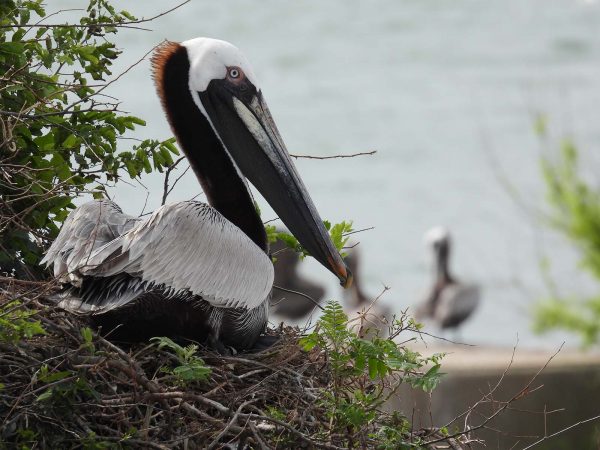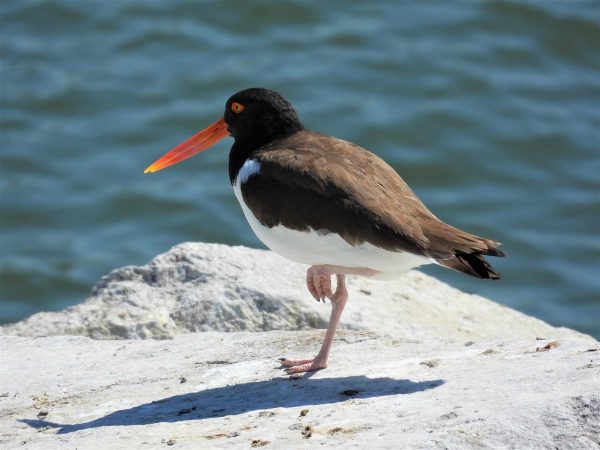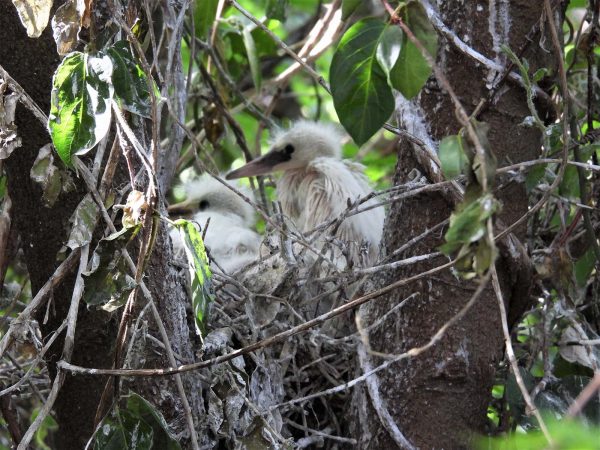What Are Seabirds?
Seabirds are birds closely associated with marine or freshwater environments that spend much of their time either over open water or close to coastlines. Seabirds are generally long-lived and produce fewer young than other birds do, which allows them to invest more time in raising their young. In fact, parental care for many species often extends well beyond fledging or when young achieve flight. Most seabirds nest in colonies, which can range in size from under a dozen to many thousands of birds.
Nine species of seabirds breed in Virginia, including several species of terns and gulls, black skimmers, brown pelicans and double-crested cormorants. Most nest on sandy beaches, shoals and spits while others nest in marshes either on washed-up wrack or on shell deposits.
Which Species of Seabirds Nest in the HRBT Colony?
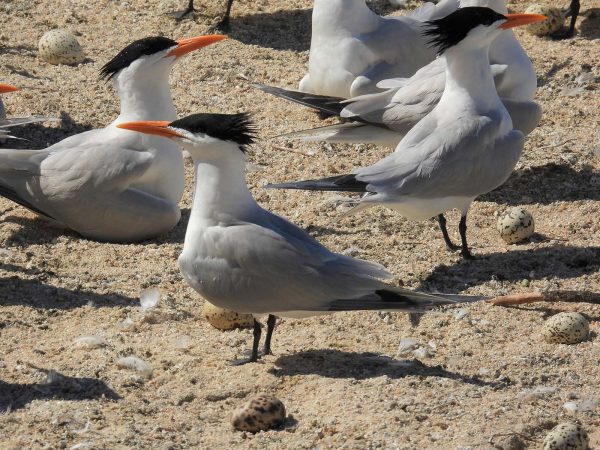
Royal terns.
Royal Tern (Thalasseus maximus)
Royal terns are a large, crested species of tern which can be easily identified by their bright orange bill and black crest. Approximately 90% of the entire breeding population in Virginia utilizes Ft. Wool for nesting.
Conservation Status: Has a moderate need for conservation (SGCN Tier 4 species) according to Virginia’s Wildlife Action Plan.
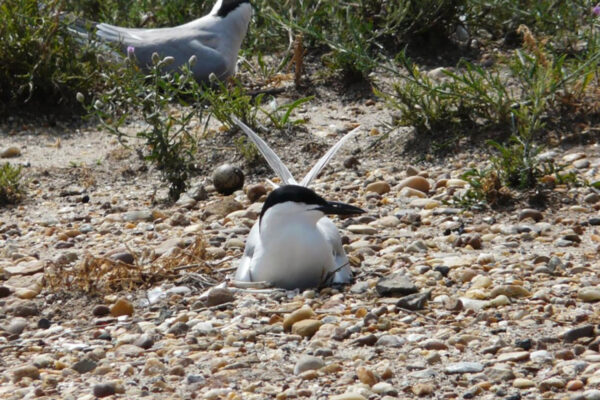
Gull-billed Tern incubating at HRBT. Photo by Inge Curtis.
Gull-billed Tern (Gelochelidon nilotica)
Gull-billed terns are a medium, crested tern with an entirely black bill, black legs, and a black cap. Unlike many other terns which plunge dive for fish, gull-billed terns generally prefer to take invertebrates and small fish “on the wing” from shallow mud flats.
Conservation Status: Recognized as a state threatened species. Has a critical need for conservation (SGCN Tier 1 species) according to Virginia’s Wildlife Action Plan.

Black Skimmer with Common Tern chick in bill. Photo by Inge Curtis.
Black Skimmer (Rynchops niger)
Black skimmers have a primarily black dorsal surface and a brightly colored orange and black bill that is shorter on the top relative to the longer, lower half. They feed by skimming their open bill along the water’s surface, snapping it shut when they feel a prey item.
Conservation Status: Has a very high need for conservation (SGCN Tier 2 species) according to Virginia’s Wildlife Action Plan.
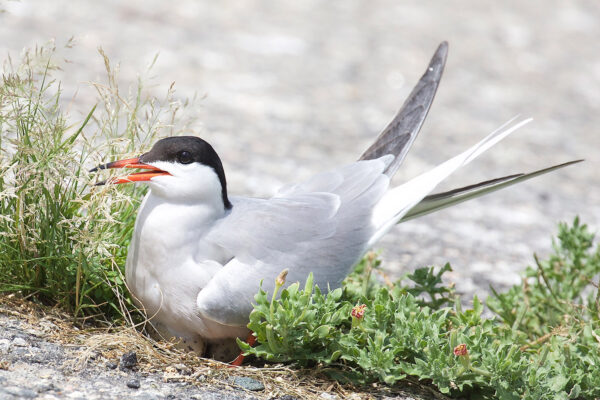
Common Tern incubating at HRBT. Photo by Inge Curtis.
Common Tern (Sterna hirundor)
Common terns are a medium sized tern with a black cap and no crest. Their bill is primarily orange-red in color but presents with a dark black tip which fades in hue throughout the course of the summer.
Conservation Status: Has a very high need for conservation (SGCN Tier 2 species) according to Virginia’s Wildlife Action Plan.
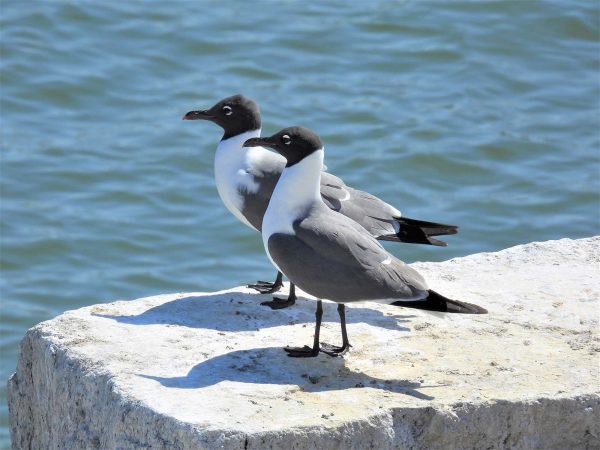
Laughing gulls.
Laughing Gull (Leucophaeus atricilla)
Laughing gulls are a smaller species of gull and their prominent black hood makes them easily recognizable to many. They get their name from their propensity to throw their heads back and produce a call similar in sound to that of a person laughing.
Conservation Status: Has a moderate need for conservation (SGCN Tier 4 species) according to Virginia’s Wildlife Action Plan.
Other Species
The habitat created at the Hampton Roads Bridge-Tunnel Expansion Site also supports several other breeding species including sandwich tern, snowy egrets, herring gulls, great black-back Gulls, American oystercatchers, killdeer, mallard ducks and Canada geese.
- A brown pelican incubates eggs atop one of the batteries on Fort Wool.
- An American oystercatcher lounges on the riprap surrounding Ft. Wool.
- Snowy egret chicks from the Ft. Wool rookery.


